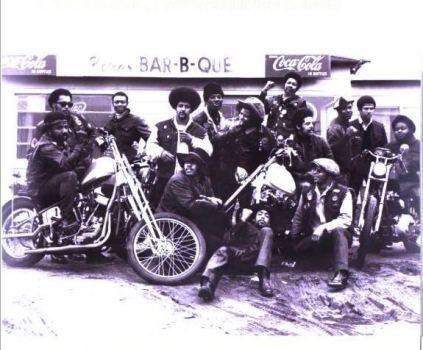
SOUL ON BIKES & BLACK CHROME | THE HISTORY OF BLACK AMERICA’S MOTORCYCLE CULTURE
Growing-up in and around Harley biker culture, there was never any talk of African American riders– let alone that may actually have a part in contributing to American motorcycling culture. It was like Black riders flat-out didn’t exist. Now finally, their incredible story is starting to emerge through books like Soul On Bikes and the Black Chrome exhibit at California African American Museum. The images and accounts are not just amazing to look at and enjoy– they are also incredibly inspiring. Many thanks to The Vintagent (one of my favorite blogs) and The Onyx Rider from which many of the pics & stories came.
When Sonny Barger formed the Oakland Hells Angels in 1957, a few miles up East 14th Street in East Oakland, a young black bike rider from Louisiana named Tobie Gene Levingston was soon to follow in his footsteps. The two knew and respected each other, and had ridden their Harleys together in the same East Bay neighborhood.
In 1959, Tobie Gene organized the Dragons, a loosely knit, all-black men’s club, one of the first of its kind. The dragon’s earliest incarnation began as an all-black car club and originally stemmed from Tobie Gene’s big brother role to keep his younger brothers and friends occupied and out of trouble. The Dragons became ten strong, including members like MacArthur, Hooker, Tobie’s brothers Joe Louis and Jonas, Baby Joe, Sam and Cousin Rabbit. Tobie Gene became the East Bay Dragons MCs first and only president, still reigning and riding after forty-four years.
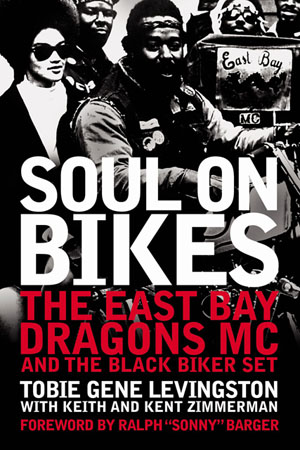
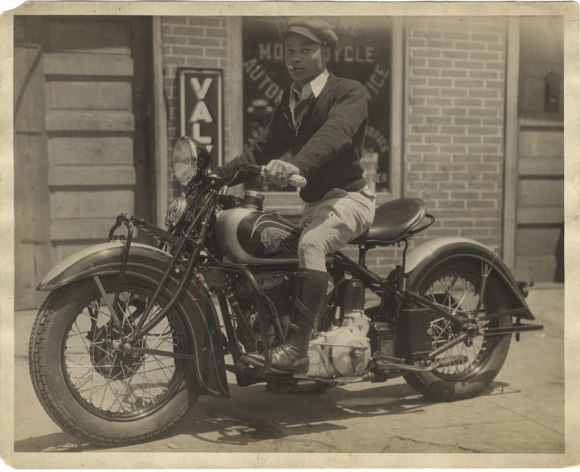
Unidentified young vintage biker in a great pair of jodphurs and riding boots-- ca. late 1920s or 30s
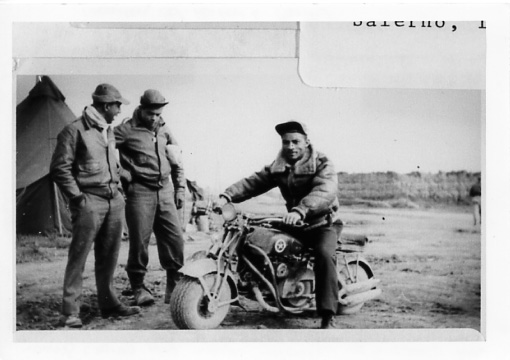
The image above illustrates the beginning of the African-American motorcycle culture– World War II. The famous Tuskegee Airmen braved racisim from both sides, and through heart and perseverance won the respect of their fellow American soldiers and German enemy alike. After the P-51 Mustangs (the airplanes of the Tuskegee Airmen), the only thing that came close to the thrill of flying was motorcycling. After the war many African American pilots wanted to continue to fly, but were denied because of the racist segregation laws. Many turned to the thrill of the motorcycling and start a new legacy.
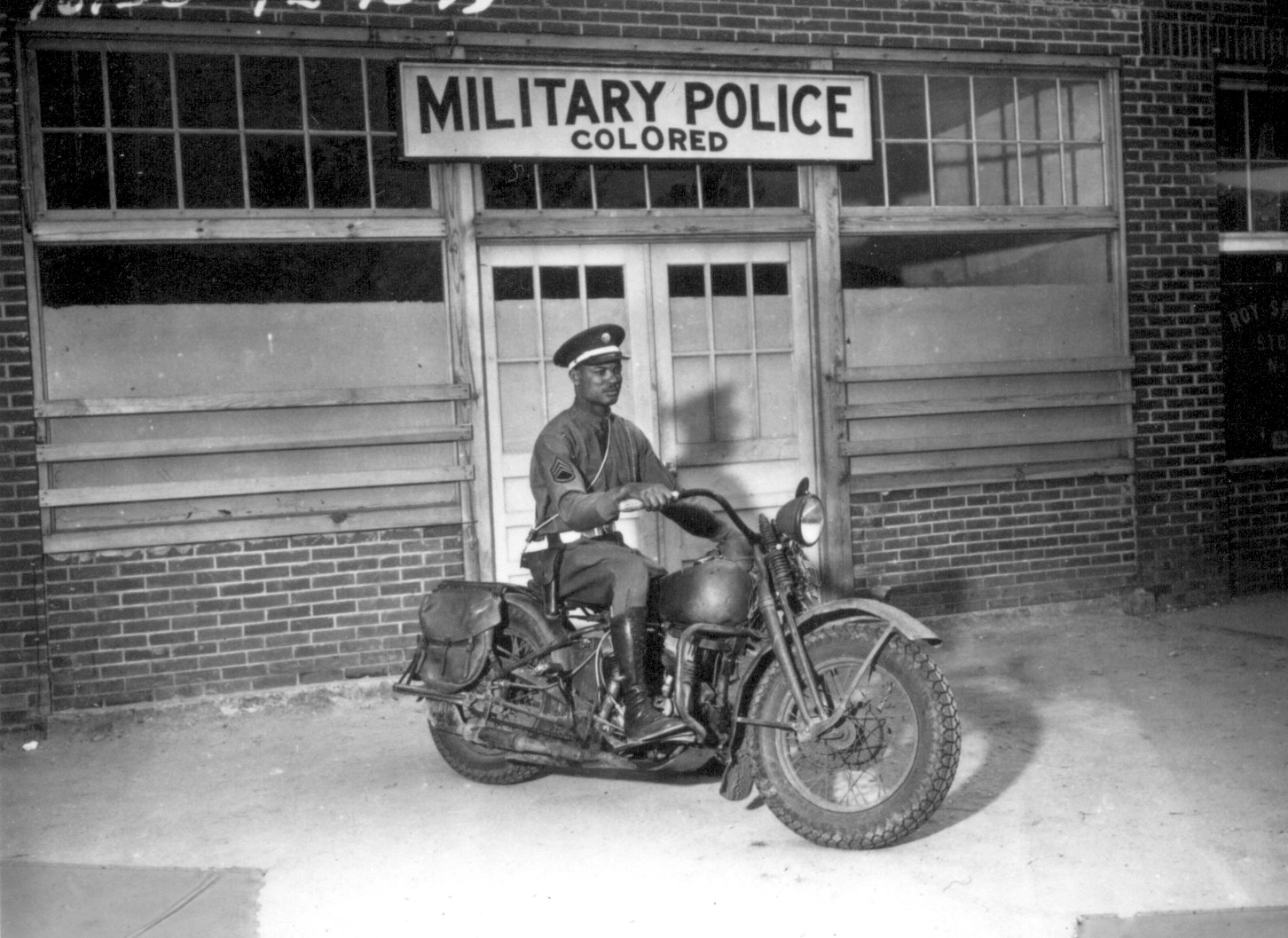
"An MP on motorcycle stands ready to answer all calls around his area. Columbus, Georgia." April 13, 1942.
Bessie Stringfield’s life is the stuff of which legends are made. Bessie has been mentioned in books, magazines, newspapers and television documentaries. In 1990, when the American Motorcyclist Association opened its Motorcycle Heritage Museum, Bessie featured in its inaugural exhibit on Women in Motorcycling. A decade later the AMA created the Bessie Stringfield Award to honor women who are leaders in motorcycling. In 2002, she was inducted into the Motorcycle Hall of Fame. Bessie, or BB as she was known among friends, described over 60 years of motorcycling: “I was somethin’! What I did was fun and I loved it.”
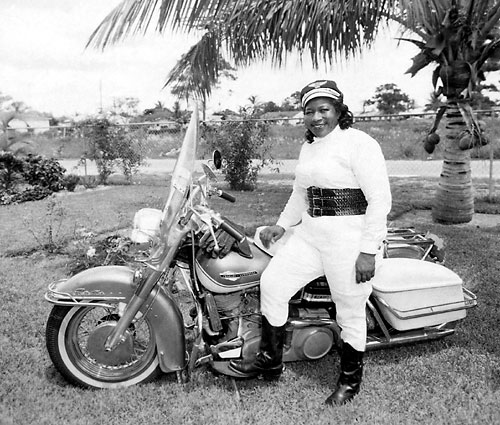

Bessie Stringfield in a great old leather kidney belt. They real help reduce back fatigue/injury and with keepin' your insides from being shaken & stirred while riding for long stretches.
In the 1930s and 1940s Bessie made eight long-distance, solo rides across the United States. Speaking to a reporter, she dismissed the idea that “nice girls didn’t ride motorcycles in those days.” She was also seemingly fearless about riding through the Deep South when racial prejudice was a tangible threat.
Born in Kingston, Jamaica, in 1911, she was brought to Boston as a young child but was orphaned by the age of 5. “An Irish lady raised me,” she recalled. “I’m not allowed to use her name. She gave me whatever I wanted. When I was in high school I wanted a motorcycle. And even though good girls didn’t ride motorcycles, I got one.” She was 16 when she climbed aboard her first motorbike, a 1928 Indian Scout, and, despite having no prior knowledge of how to operate it whatsoever, Bessie proved to be a natural. She insisted God gave her the skills. “My [Irish] mother said if I wanted anything I had to ask Our Lord Jesus Christ, and so I did,” she said. “He taught me and He’s with me at all times, even now. When I get on the motorcycle I put the Man Upstairs on the front. I’m very happy on two wheels.” She was especially happy on Milwaukee iron. Her one Indian notwithstanding, Bessie said of the 27 Harleys she owned in her lifetime, “To me, a Harley is the only motorcycle ever made.”
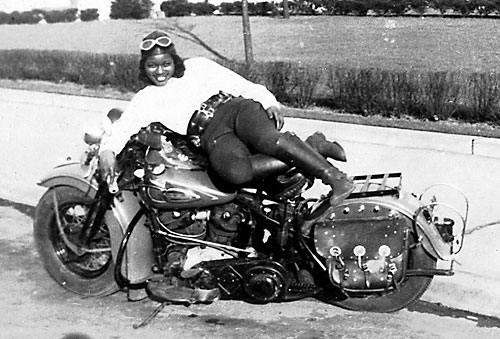
At the age of 19 Bessie Stringfield began tossing a penny onto a map and then riding to wherever it landed. She covered all of the 48 lower states. Bessie’s faith got her through many nights. “If you had black skin you couldn’t get a place to stay,” she said. “I knew the Lord would take care of me and He did. If I found black folks, I’d stay with them. If not, I’d sleep at filling stations on my motorcycle.” Bessie folded her jacket on the handlebars as a pillow and rested her feet on the rear mudguard. Using her skills and can-do attitude, she also performed trick riding in carnival stunt shows.
Between her travels, Bessie wed and divorced six times, declaring, “If you kissed, you got married.” She and her first husband were deeply saddened by the loss of three babies and Bessie had no more children. On divorcing her third husband, Arthur Stringfield, she said, “He asked me to keep his name because I’d made it famous!”
During the Second World War, Bessie worked for the army as a civilian motorcycle dispatch rider. The only woman in her unit, she completed rigorous training maneuvers. She learned how to weave a makeshift bridge from rope and tree limbs to cross swamps, although she never had to do so in the line of duty. With a military crest on the front of her own blue Harley, a “61,” she carried documents between domestic U.S. bases. Bessie encountered racial prejudice on the road. On one occasion she was followed by a man in a pickup truck who ran her off the road, knocking her off her bike. She played down her courage in coping with such incidents. “I had my ups and downs,” she shrugged.
In the 1950s, Bessie bought a house in Miami, Florida. She became a licensed practical nurse and founded the Iron Horse Motorcycle Club. Disguised as a man, Bessie won a flat track race but was denied the prize money after she took off her helmet. Her other antics, such as riding while standing in the saddle of her Harley, attracted the attention of the local press. Reporters nicknamed her the “Negro Motorcycle Queen” and later the “Motorcycle Queen of Miami.”
Late in life, Bessie suffered from symptoms caused by an enlarged heart. “Years ago the doctor wanted to stop me from riding,” she recalled. “I told him if I don’t ride, I won’t live long. And so I never did quit.” Before she died in 1993, at the age of 82, Bessie said, “They tell me my heart is three times the size it’s supposed to be.” An apt metaphor for this unconventional woman whose heart and spirited determination have touched so many lives.
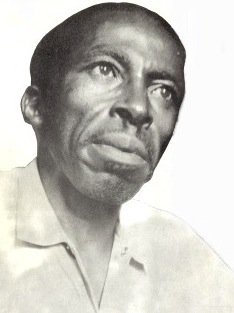
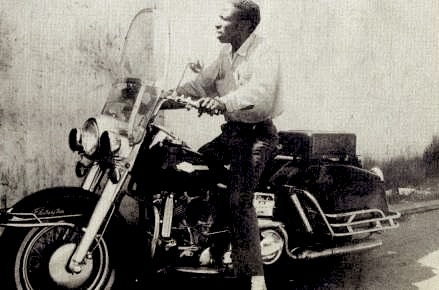
Ben Hardy (pictured above) created the “Captain America” and ‘Billy’ choppers for the film Easy Rider. Hardy’s Motorcycle Service was located at 1168 E. Florence in Los Angeles. The building is still there, only now occupied by an auto repair shop.
Story goes– Peter Fonda, the producer of Easy Rider, hired Cliff Vaughs to coordinate the motorcycles for the film, and Cliff tapped Ben Hardy for the actual construction of the machines. In total, four former police bikes were used in the film. The 1949, 1950 and 1952 Harley Davidson HydraGlide bikes were purchased at an auction for $500. Ben Hardy took the standard H-D frames and used Buchanan’s frame shop to alter the steering head angle to 45 degrees. The steering head was cut off and repositioned, and the resultant extreme rake required a 12″ extension to the telescopic forks. A set of A.E.E. fork clamps are used, with extended handlebar clamps (‘dog bones’); the handlebars have a rise of 13″ – not yet in ‘ape hanger’ territory.
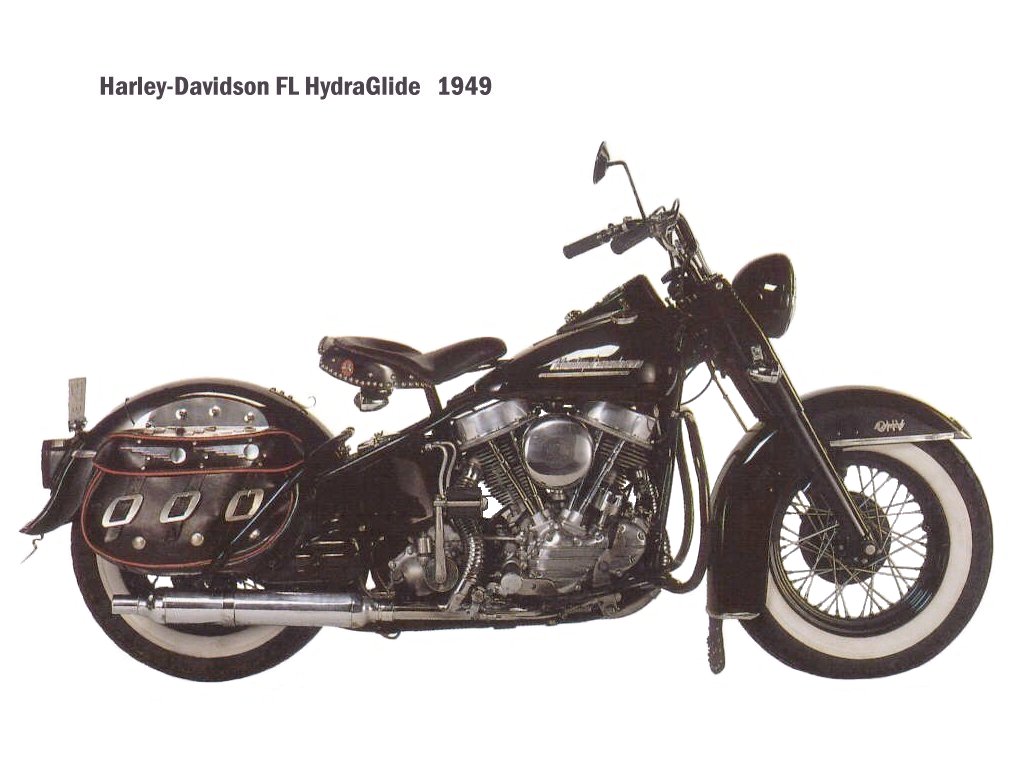
Each bike had a backup to make sure that shooting could continue in case one of the old machines failed or got wrecked accidentally. One “Captain America” was demolished in the final scene, while the other three were stolen and probably taken apart before their significance as movie props became known. The demolished bike was rebuilt by Dan Haggerty, shown in a museum and finally sold at auction in 2001. Hopper and Fonda hosted a wrap party for the movie and then realized they hadn’t shot the final campfire scene. Thus, it was shot after the bikes had already been stolen, which is why they are not visible in the background as in the other campfire scenes.

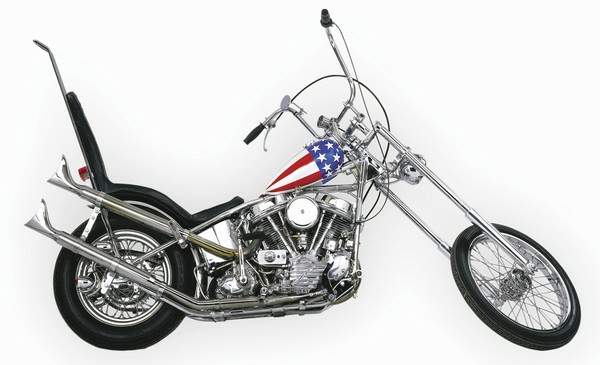
The iconic Captain America chopper from the 1969 film– Easy Rider
A claim was made at the Black Chrome exhibit that the whole ‘extended fork’ (chopper) style of custom motorcycles was created by Black rider/artisans – interesting, but yet unfounded and definitely worth further exploring. That would definitely shake some old-school white bikers down to their core. The Vintagent is investigating the claim, and hot on the case– can’t wait to hear more.
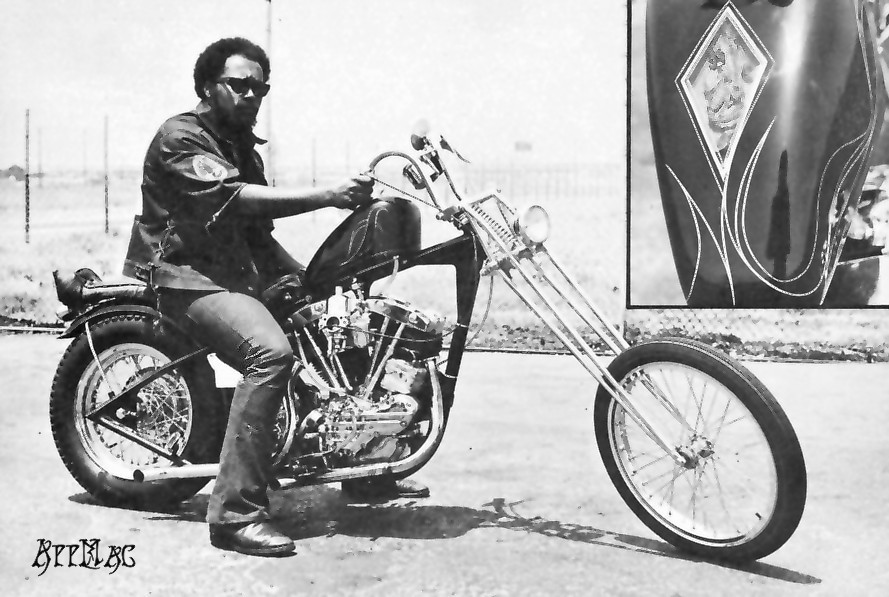
Black biker, Craig “Tiger” Wright, East Bay Dragons.
More Vintage Photos -
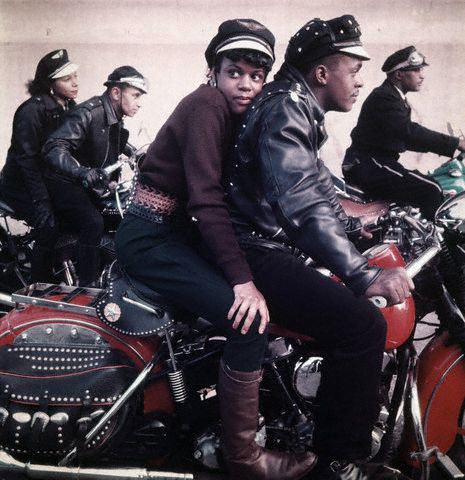
ca. 1959, Harlem, NY– Black Harlem Motorcycle Club –Image by © Norman Parkinson Limited/Corbis
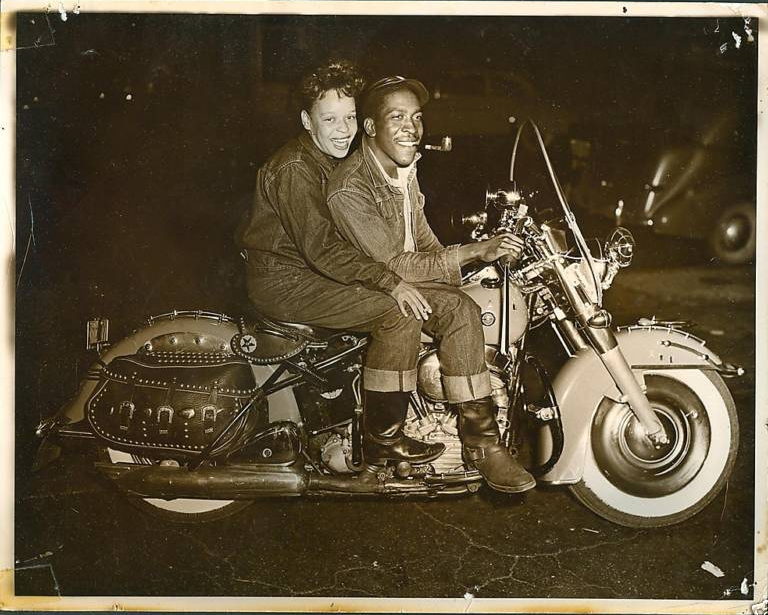
circa 1950s– Black couple motorcycling, what an amazing piece of biker history.

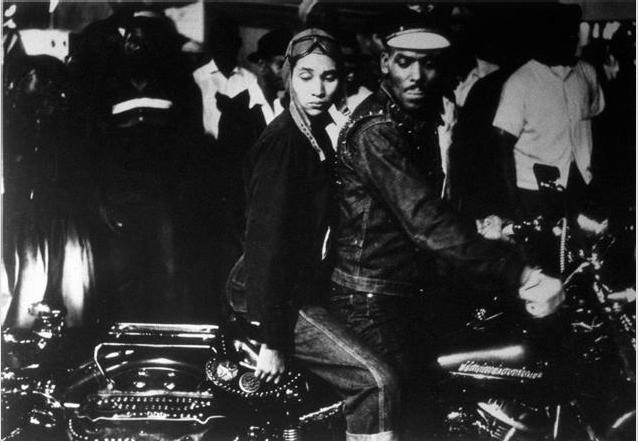
Robert Franks's "Indianapolis"-- A very cool & good-looking couple riding with style, and clearly ahead of their time. Looks like some pretty cool spot-work on his vintage motorcycle jacket and seat. Are those studded saddle bags or part of the bike?
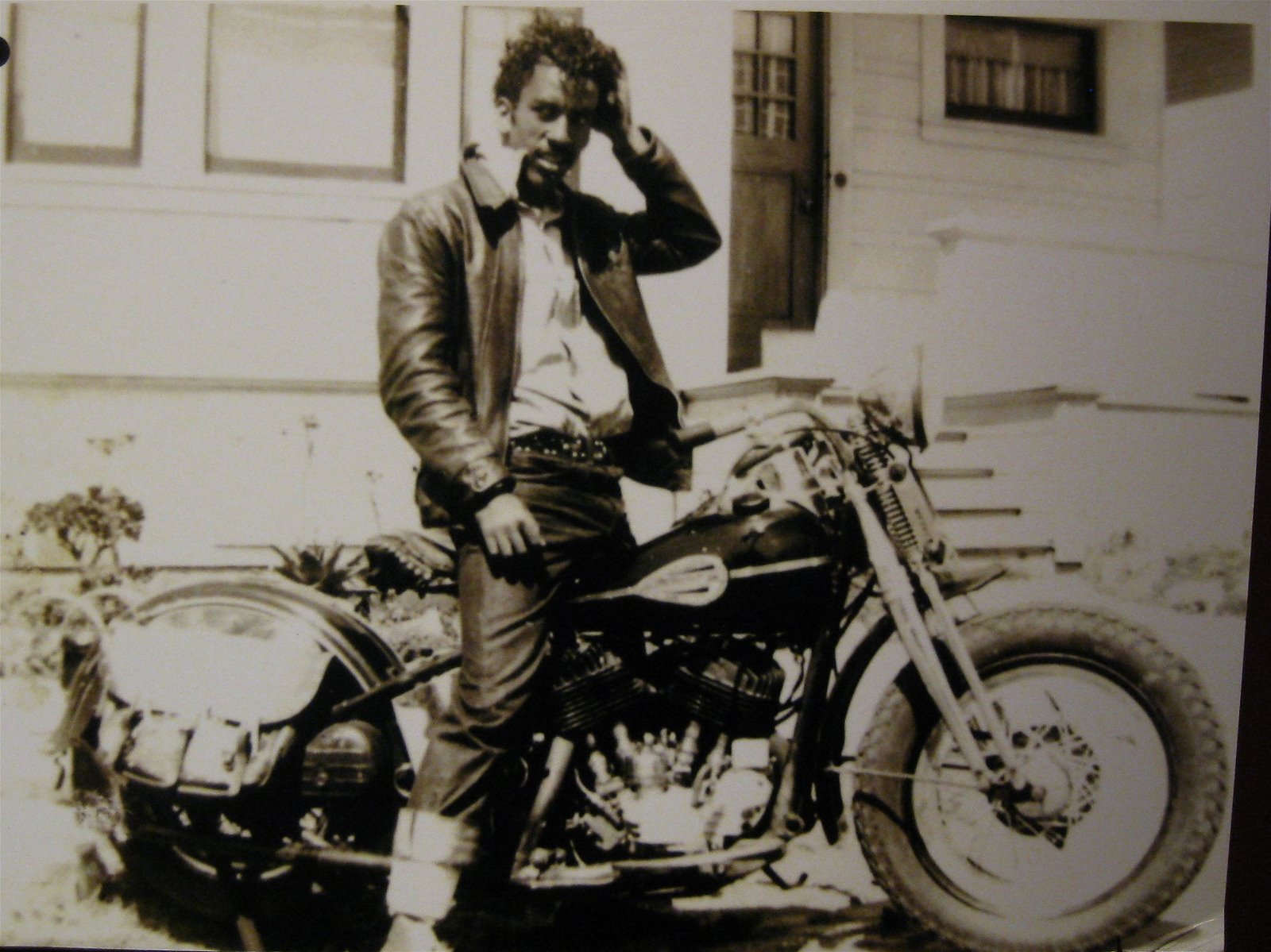
Early Black Biker-- lookin' rough & ready. Love his crazy hair, cool belt and rolled-up selvedge jeans.
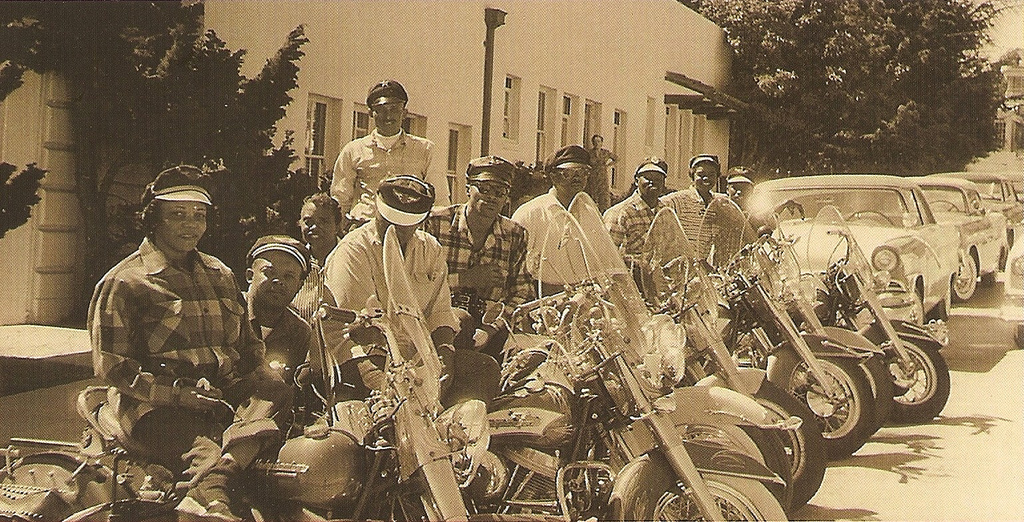
historic image of Black bikers from the Black Chrome exhibit
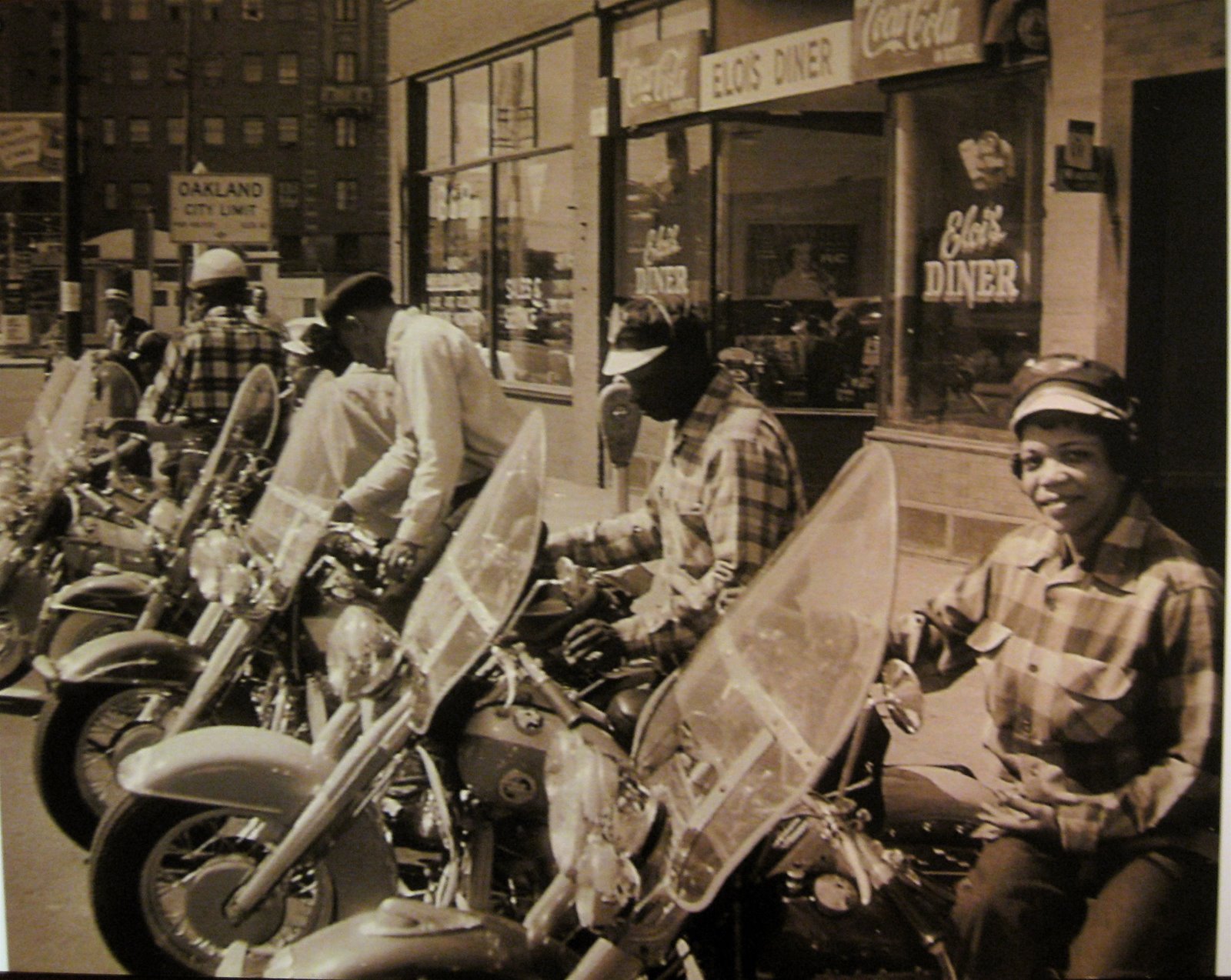
Vintage Black bikers shot in front of the Elois Diner
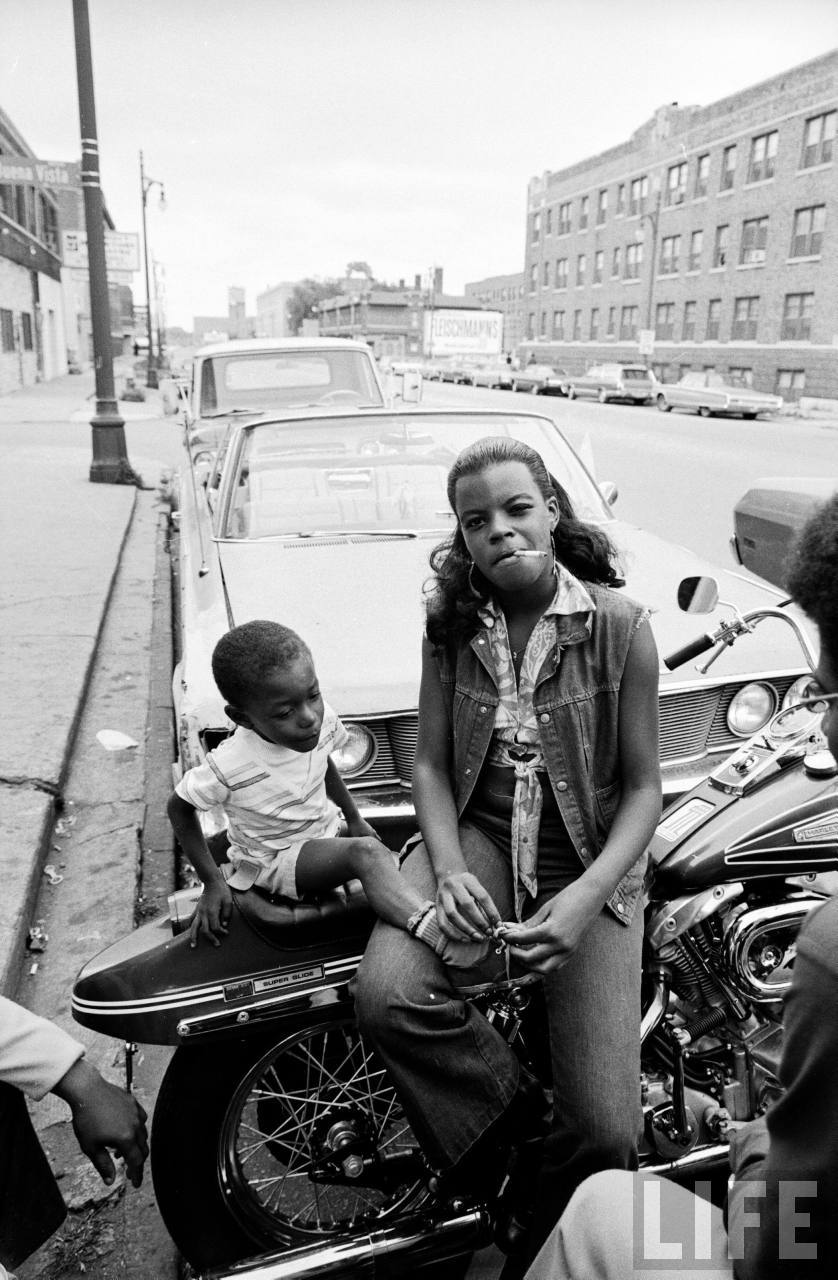
African American woman sitting on a motorcycle w. her child, part of the growing numbers of black motorcycle enthusiasts– circa 1971.
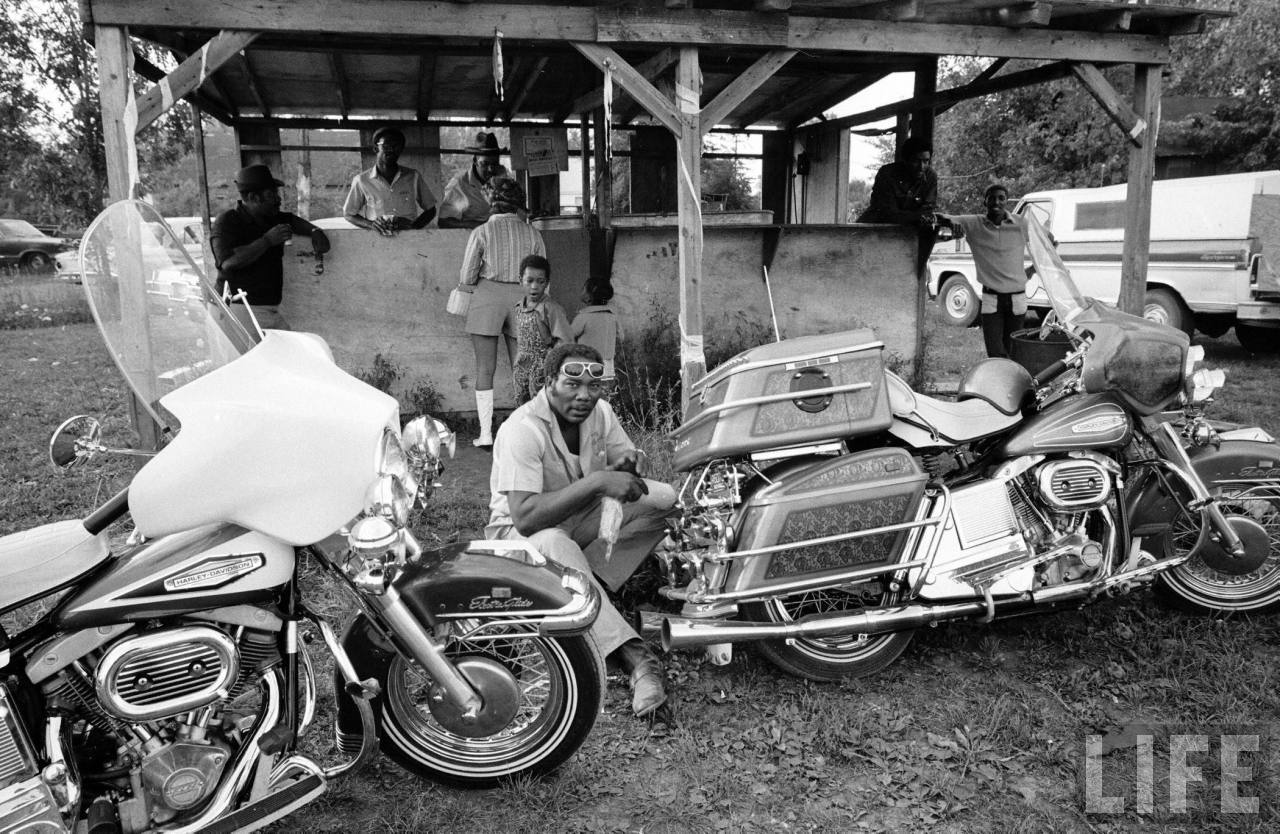
Black motorcyclist of the Big Circle Motorcycle Association sitting between pair of Harley Davidson cruising bikes– circa 1971.
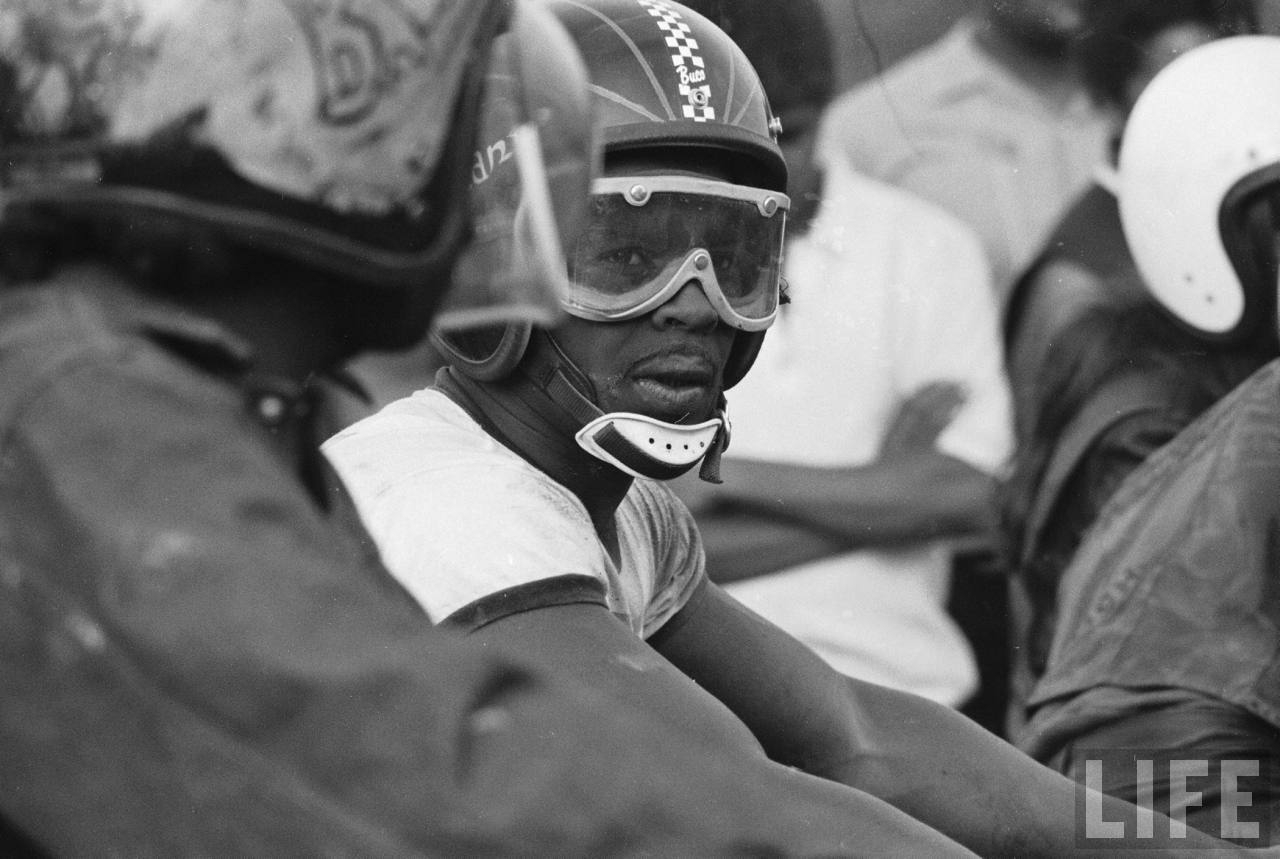
African American motorcycle enthusiast belonging to the Big Circle Motorcycle Association prepares to ride– circa 1971.
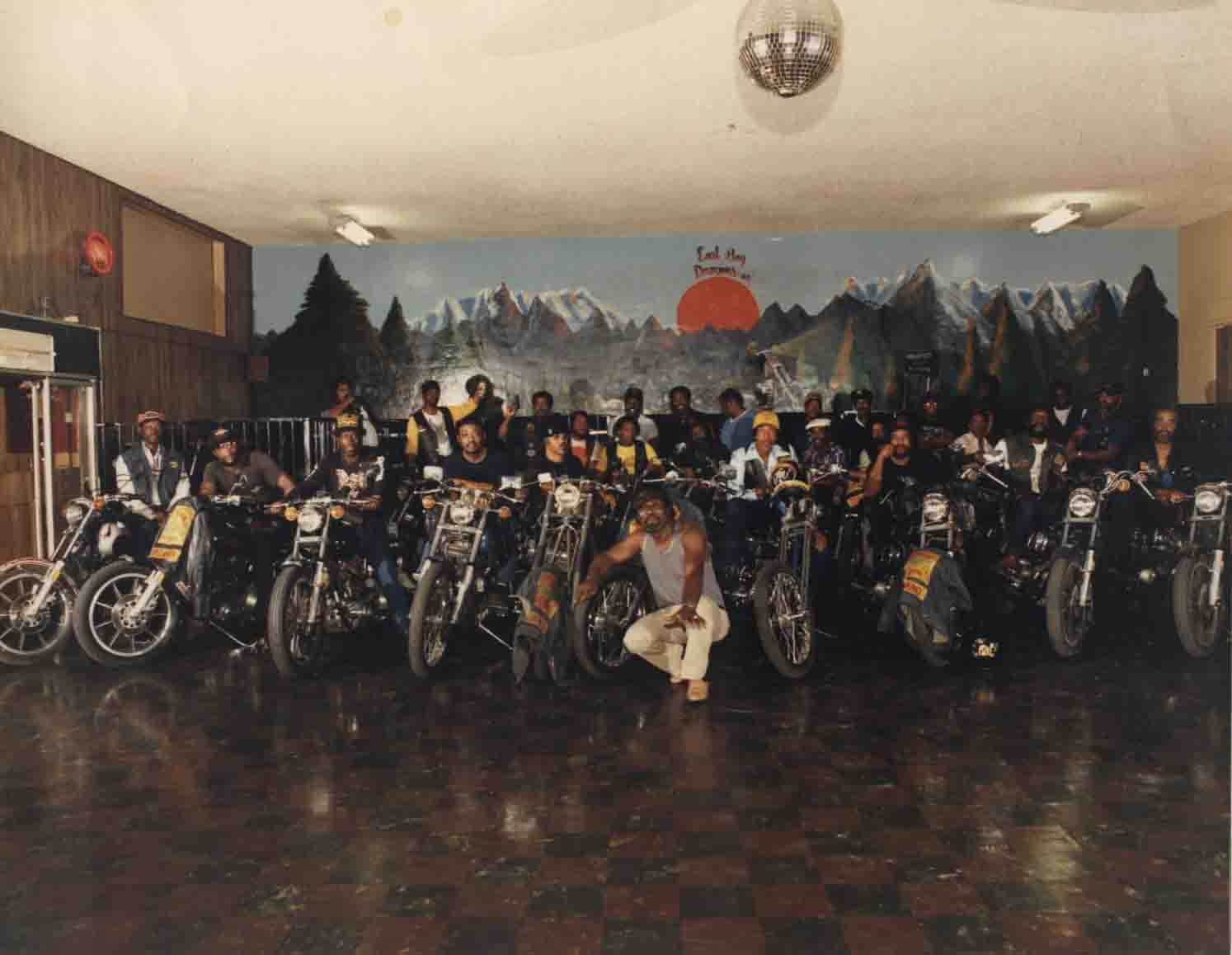

Legendary Black bikers– the East Bay Dragons MC
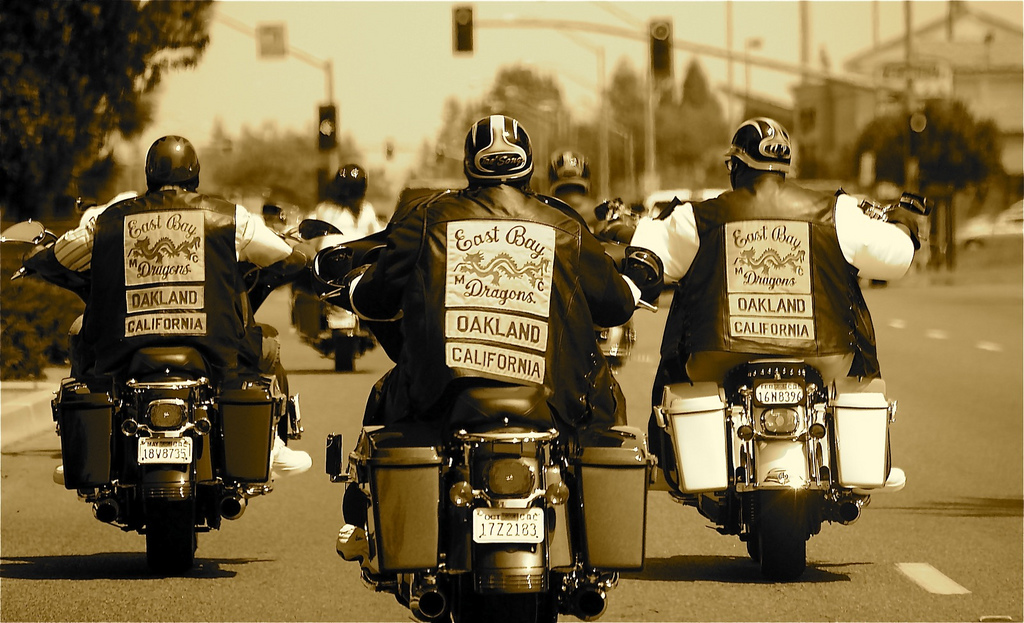
The East Bay Dragons in full-dress mode.

East Bay Dragons Club Member
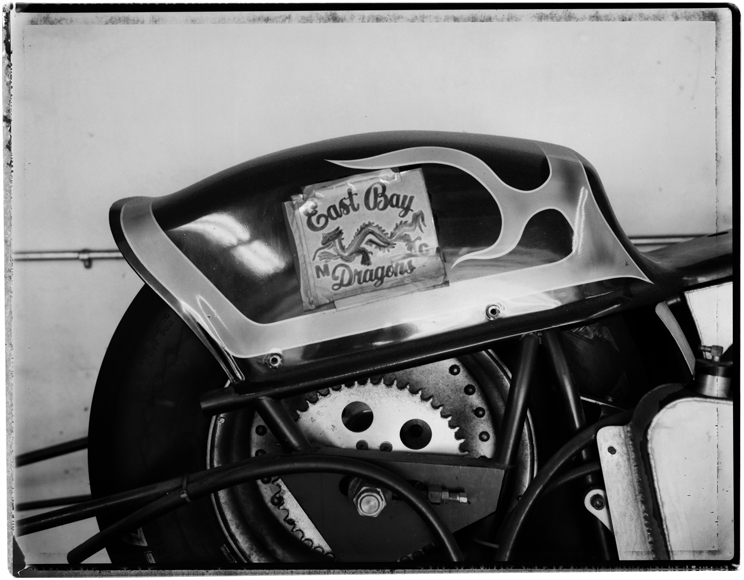
East Bay Dragons
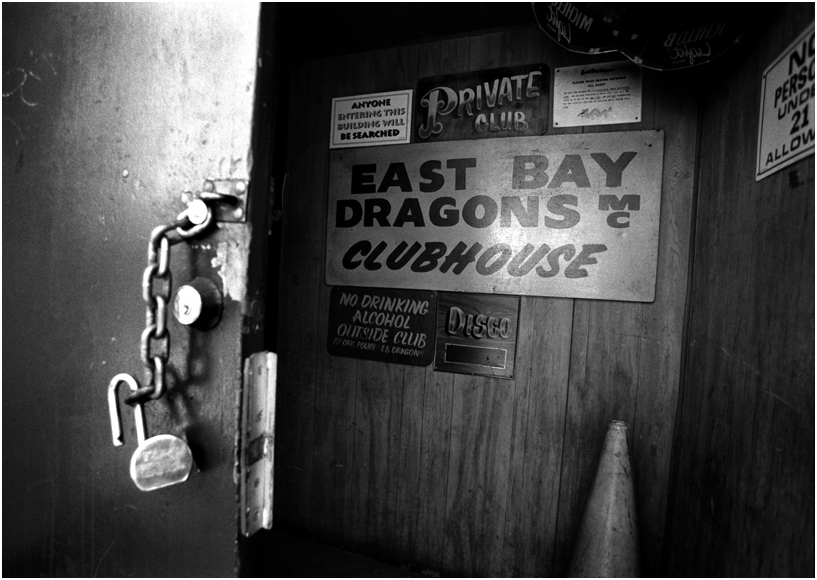
East Bay Dragon’s private clubhouse
This entry was posted in American, culture, design, fashion, history, Icons, LIFE archive, motorcycle, movies, pop culture, sports, style, travel, vintage and tagged 1930s, 1940s, 1950s, 1960s, 1970s, 1980s, American, art, biker, black, Black Chrome, Black history, California, club, counterculture, culture, design, fashion, Harley Davidson, Hells Angels, history, motorcycle, Oakland, retro, Soul on Bikes, vintage.
